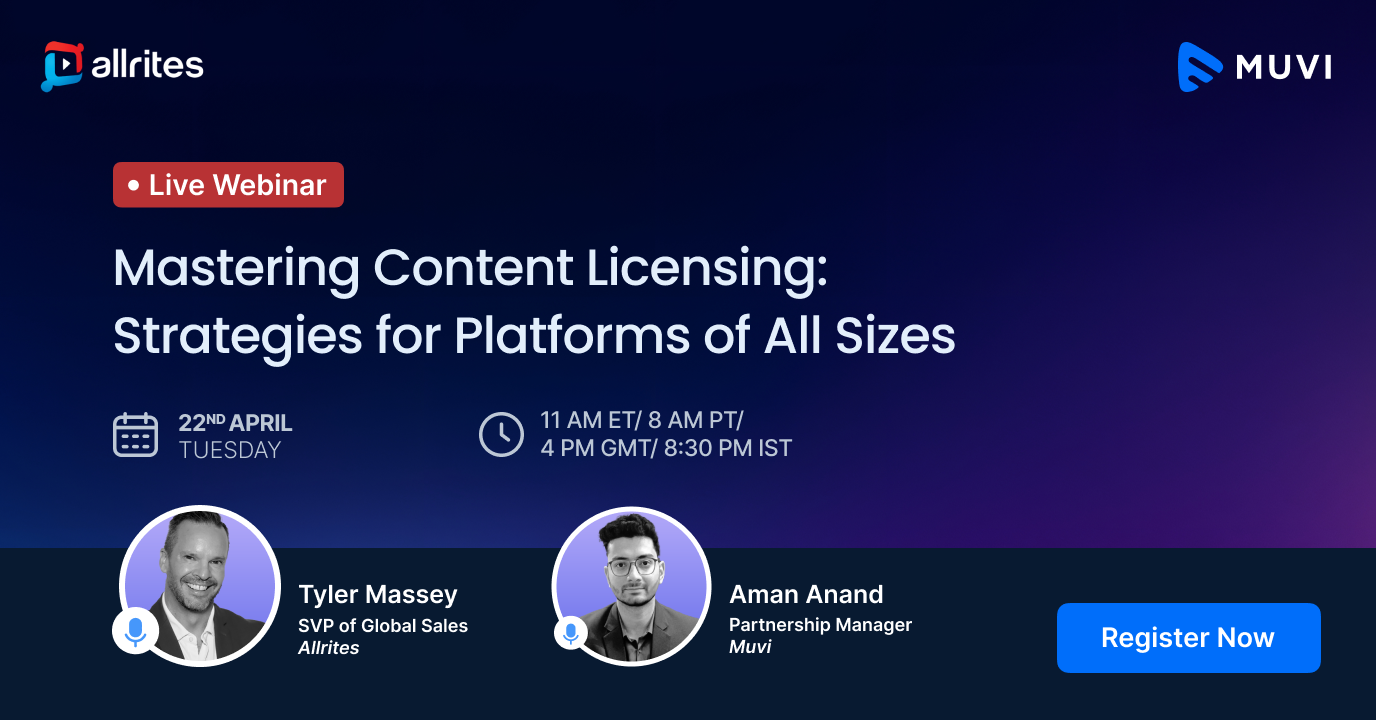Codec
Codec is the blend of two words i.e. coder and decoder (co + dec). A codec encodes a signal or a data stream for storage and transmission, probably in encrypted form and the decoder function converses the encoding for editing or playback. Codecs are mainly used to compress the large video and audio files to transmit flawlessly over the internet. At the users end the video/audio files are decoded for viewing.
Most commonly, codecs are used in streaming media, video editing and videoconferencing applications. Some codec examples are XviD, DivX, RealAudio, MP3, RealVideo and WMA, however, there are several other incomprehensible codecs. For live audio streaming services, codecs like AAC (Advanced Audio Coding) and Opus are popular due to their efficient compression and high audio quality, ensuring a smooth listening experience for users.
Related Terms :Latest Case Studies
Upcoming Webinar

Mastering Content Licensing: Strategies for Platforms of All Sizes
The content licensing landscape is evolving rapidly, and platforms—whether established networks or emerging streamers—must adapt to stay ahead. Building content acquisition strategy effectively is essential for platforms looking to expand their libraries, reach new audiences, and remain competitive in a changing market.
In this session, Tyler Massey, SVP of Global Sales at our content licensing partner, allrites, will share key insights into today’s licensing environment. He will outline practical strategies that platforms can use to secure high-quality content efficiently and affordably.
Key Takeaways
- The State of Content Licensing Today – How market shifts impact platforms of all sizes.
- Big vs. Small Players – Key differences in licensing strategies for major networks vs. niche and independent streamers.
- Solving Licensing Challenges for SMEs – How allrites’ CaaS platform simplifies content acquisition and speeds up distribution.
- Smart Content Buying – How to license film and TV content effectively without unnecessary costs.
April 22
8:00 AM PST
Can’t find what you’re looking for?
Please drop your query on the contact us form, and our OTT consultant will reach out to you shortly with answers.
Please drop your query on the contact us form, and our OTT consultant will reach out to you shortly with answers.


